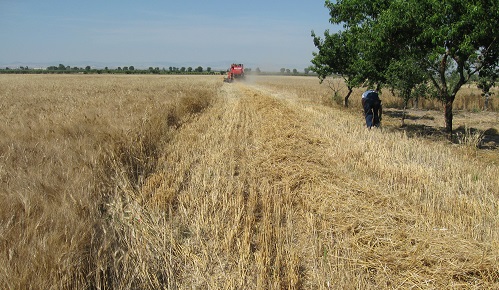
Agriculture in the Mediterranean area is among the sectors most at risk due to the impacts of climate change. Climate models estimate a likely decrease in seasonal and annual rainfall across Mediterranean areas, with an increased risk of prolonged dry seasons, droughts and extreme rainfall events. Managing water use efficiently, particularly in irrigation, becomes essential to ensure agricultural production.
A recent study published in the journal Water, carried out by researchers of the CMCC, the University of Sassari (Antonio Trabucco, Serena Marras, Simone Mereu, Donatella Spano) and the IHE Delft Institute for Water Education (Sara Masia and Janez Susnik), as part of the SIM4NEXUS project, assessed the vulnerability of irrigated agriculture in six irrigation districts and their associated reservoirs across Southern Italy, considering the potential impacts of climate change in the period 2036-2065.
According to the data processed in the areas under study (located in Sardinia, Sicily, Puglia and Basilicata), precipitation is expected to decrease by 5-20% over all the observed reservoirs, with strongest decreases on the western area of Sardinia and on the San Giuliano water reservoir, which serves Basilicata and Apulia (10-20%). In parallel, the water demand for irrigation is expected to grow due to higher temperatures that result in accelerated evapotranspiration.
The areas under study have in common a high risk level, explains CMCC researcher Antonio Trabucco, but they are very different in terms of infrastructure, water use and water management. “For example in the north of Sardinia, the Liscia dam serves the Costa Smeralda area and water demand for tourism is high, as well as for agricultural uses. The water districts of Nurra and Sulcis Iglesiente, in the western part of Sardinia, are under high pressure because they experienced one of the strongest droughts in their history. Although these districts have implications on various sectors (domestic, tourism, industrial), the strongest consequences have been felt in agriculture, with strong reductions in irrigated areas and a fall in agricultural production. As a consequence, political strategies are being highlighted to improve or diversify the sources of irrigation supply, for example by eliminating certain restrictions to reuse waste water or by increasing the authorized reservoir quotas. ”
However, the vulnerability depends not only on the precipitation reduction but also on the recharge capacity of the basins, on the efficiency degree of the irrigation systems and on the management capacity. In these respects, measures and investments to increase resilience are necessary in all the cases observed in the study, which present a high degree of vulnerability to water stress.
“First of all, it is necessary to prioritize water allocations among different needs, before the conditions of water scarcity become critical,” explains Trabucco. This means improving water management plans taking into account the effects of climate change. Expected impacts of climate change make is business as usual unsustainable: “we need to maximize the conditions for a fruitful dialogue in order to jointly manage water in all the situations observed, as a necessary condition to move forward”. For example, investments in more efficient irrigation systems and intervention on infrastructures to avoid losses are certainly essential to reduce the vulnerability of irrigated agriculture.
However, the key point to tackle future risks is to activate new communication and coordination strategies, not only between those bodies traditionally involved in water management but also by including other sectors. In fact, the use of water is intrinsically linked to the use of other resources (e.g. energy, land use).
“The case of the San Giuliano water reservoir, for example, reveals peculiar management problems, as the system should equally serve the needs of the irrigation districts in Basilicata and Apulia. The kind of crops grown in Apulia need more water in summer, while those in Basilicata in spring. These conditions require coordination and allocation planning in order to prevent criticalities in water availability to affect mainly or exclusively late crops. Such coordination requires not only a shared planning among different bodies at regional level, but also shared solutions at interregional level”.
For further information, read the integral version of the paper:
Masia S., Sušnik J., Marras S., Mereu S., Spano D., Trabucco A.
Assessment of Irrigated Agriculture Vulnerability under Climate Change in Southern Italy, 2018, Water, DOI: 10.3390/w10020209


